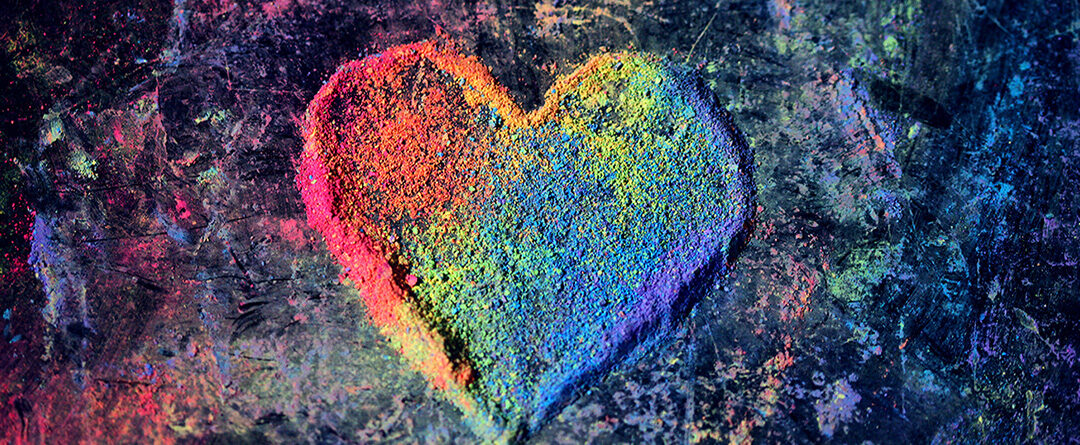by Susan Schneider
“If you remove the yoke from among you, the pointing of the finger, the speaking of evil, if you offer your food to the hungry and satisfy the needs of the afflicted, then your light shall rise in the darkness and your gloom be like the noonday. The Lord will guide you continually, and satisfy your needs in parched places, and make your bones strong; and you shall be like a watered garden, like a spring of water, whose waters never fail. Your ancient ruins shall be rebuilt; you shall raise up the foundations of many generations; you shall be called the repairer of the breach, the restorer of streets to live in.” (Isaiah 58: 9b-12)
Can art change and heal the world? While we are used to thinking of art as a response to injustice in society, it may seem less obvious that art can also initiate new ways of caring for the world. Change is often prodded by people asking why things are the way they are. Those questions can lead individuals and communities to discuss and collaborate on ways to address destructive ideas and situations. Artists for generations have used their gifts both to raise awareness of what is wrong in our world and to offer potential solutions.
Here are two works of art that have shaped my faith journey and ministry. They are by no means the full list!
1. “Christ of the Breadlines” (1951) by Fritz Eichenberg, The Catholic Worker magazine.
A copy of this lithograph hangs in my dining room, a steady reminder that Jesus, the Bread of Life, is always where he said he’d be—among the poor and hungry. Though Jesus’ comment—“you will always have the poor with you” (Mark 26:11)— is frequently offered as an excuse to do nothing about poverty, Jesus himself is quoting a portion of Scripture with a very different message: “There will always be poor people in the land. Therefore I command you to be openhanded toward your fellow Israelites who are poor and needy in your land.” (Deuteronomy 15:11).
“Christ of the Breadlines” also awakens me to the reality that while I eat today, many will not, and those neighbors look a lot like Jesus. Rather than inducing me to feel bad about my meals, thinking of Jesus going hungry makes me want to fix him a sandwich. On a practical level, that might look like donating to a food pantry or writing a check to an organization like the ELCA World Hunger Appeal. Feeding “Christ of the Breadlines” may also resemble advocating for fair legislation around food security issues or other proactive steps to address poverty. What this print does not do is allow me to turn my face away from hungry people. That is why I cherish this example of how art preaches without a word.
2. The Shower of Stoles Project
When I first encountered The Shower of Stoles Project in the early 2000s, the ELCA did not yet permit the ordination of LGTBQIA+ people, nor were any of that community legally allowed to marry in any state in this country. Founded by a Presbyterian pastor who was forced to resign her call when she came out as lesbian in 1995, the Shower of Stoles is a collection of over 1000 gorgeous liturgical stoles, each one bearing a story of someone called to ordained ministry who could not serve in that capacity while being authentically themselves. The whole collection represents the loss of the leadership of thousands of gifted pastors from thirty-one denominations and faith traditions in six countries on three continents. Portions of the collection were on display at synod and Churchwide assemblies for years, including in 2009, when the ELCA voted to officially recognize church leaders who were in “publicly accountable same-gender lifelong monogamous relationships.”
Seeing and reading just a portion of the stole collection made me weep. And it made me angry. I was a divorced woman seeking to be a pastor—a position I would have been denied on both counts not too many years prior. In the presence of those stoles, I was surrounded by countless individuals who loved Jesus and others just as I did. I’ve used my position as a straight pastor to speak and write and work to overturn rules that kept my LGBTQIA siblings in faith from their callings. I feel a renewed sense of urgency to stand in solidarity with my LGBTQIA siblings in light of recent state and national legislation that puts their lives at risk.
More than just scraps of fabric and some stories, this art installation helped change a church and shape my vocation.
These are just two of many artistic endeavors that have drawn me not into quiet contemplation but active resistance because of my faith. I hope you have encountered similar examples of creativity that have prodded you to actively live your faith. If I am ever to be called “a repairer of the breach” or a “restorer of streets to live in,” I have artists to thank for the designations.
Discussion questions:
1. What creative expressions have prodded you to take action on behalf of someone or something?
2. Which of the tasks Isaiah 58:9-12 calls believers to undertake resonates most for you?
Closing prayer:
Beautiful Savior, you cherish this magnificent world full of wonders and mourn that is broken by sin. Continue to send us invitations to engage in creative acts of service and renovation so that people and places that feel parched by injustice become like watered gardens. Open our eyes to action-provoking art. In Jesus’ name, we pray. Amen.
 Pastor Sue Schneider was born and grew up in the Philippines, the middle child of Lutheran Church-Missouri Synod missionaries. Her first career was teaching English on the middle, high school, and college levels. She graduated from Pacific Lutheran Theological Seminary in 2002, and has served as a pastor in Iowa, Illinois, Wisconsin, and Washington; now she is Interim Associate Pastor at Messiah Lutheran Church in Cypress, TX. Sue is passionate about appreciating and making art–especially stained glass mosaics.
Pastor Sue Schneider was born and grew up in the Philippines, the middle child of Lutheran Church-Missouri Synod missionaries. Her first career was teaching English on the middle, high school, and college levels. She graduated from Pacific Lutheran Theological Seminary in 2002, and has served as a pastor in Iowa, Illinois, Wisconsin, and Washington; now she is Interim Associate Pastor at Messiah Lutheran Church in Cypress, TX. Sue is passionate about appreciating and making art–especially stained glass mosaics.

